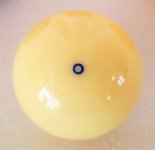How beneficial do you think it would be to have a wearable device that gives instant feedback on your stroke?
For example, you get a small vibration if you twist your wrist, or a sound if your backstroke was jerky. You could also store the data from a number of strokes to analyze your consistency.
And if such a device already exists, I want to know about it!
For example, you get a small vibration if you twist your wrist, or a sound if your backstroke was jerky. You could also store the data from a number of strokes to analyze your consistency.
And if such a device already exists, I want to know about it!
